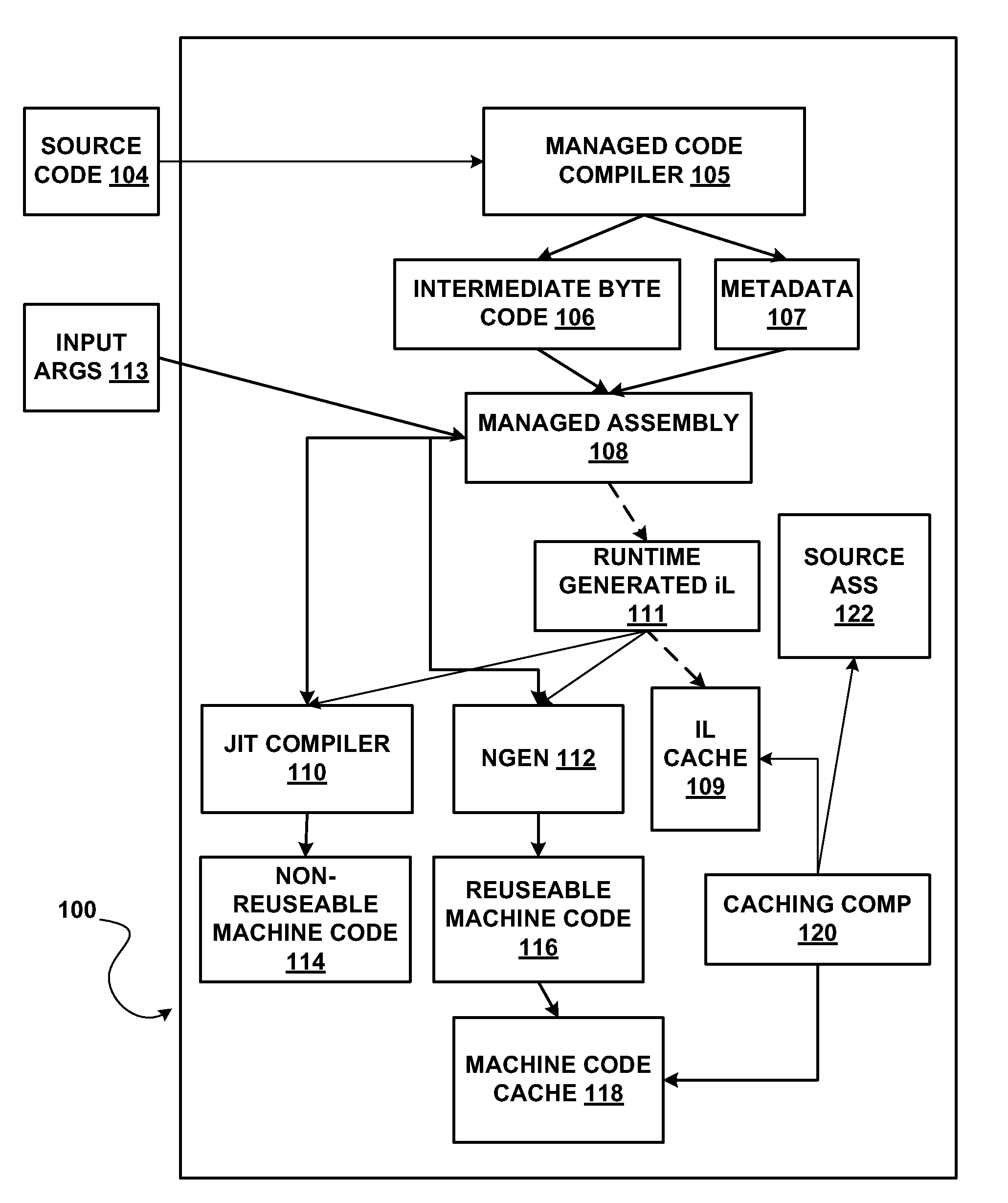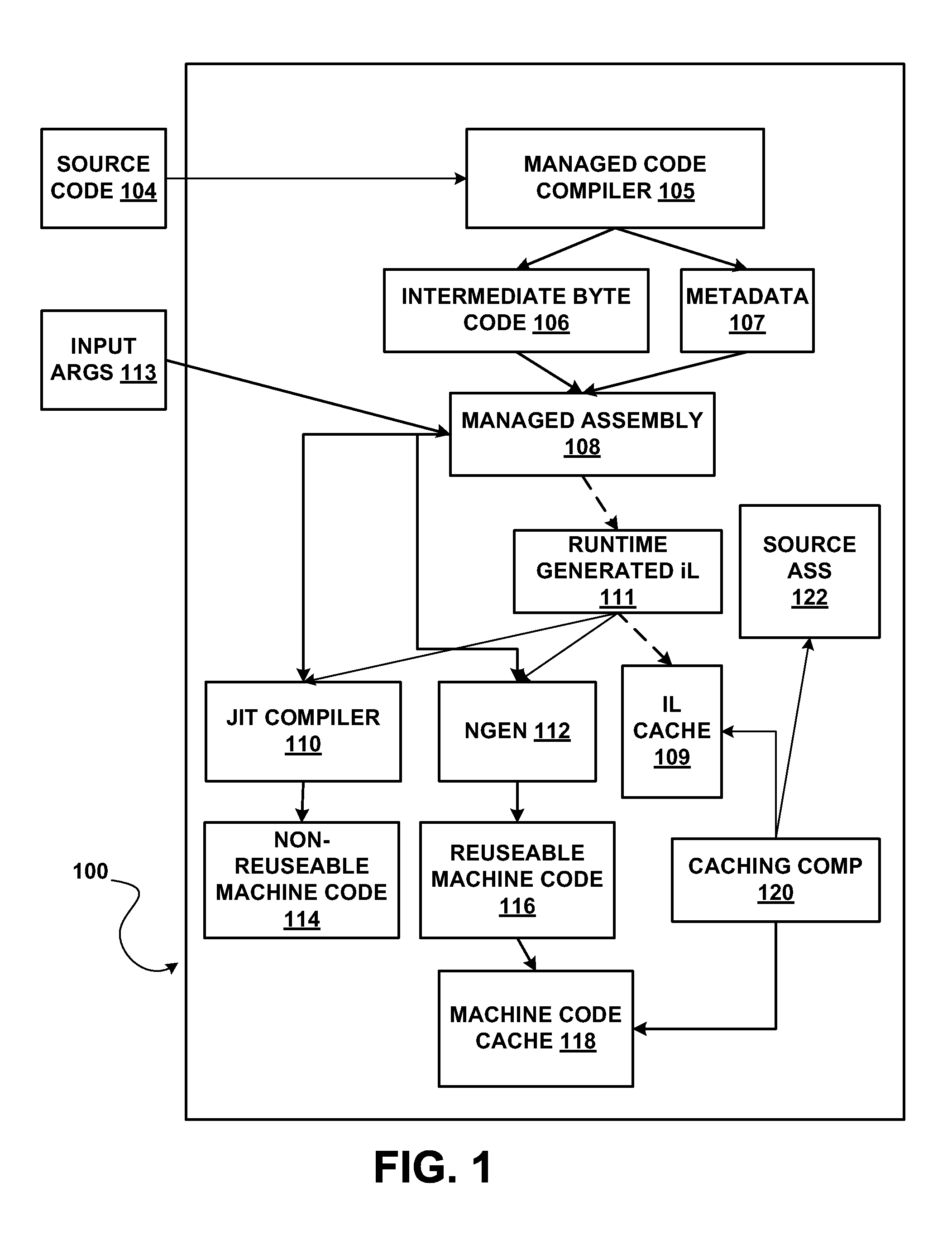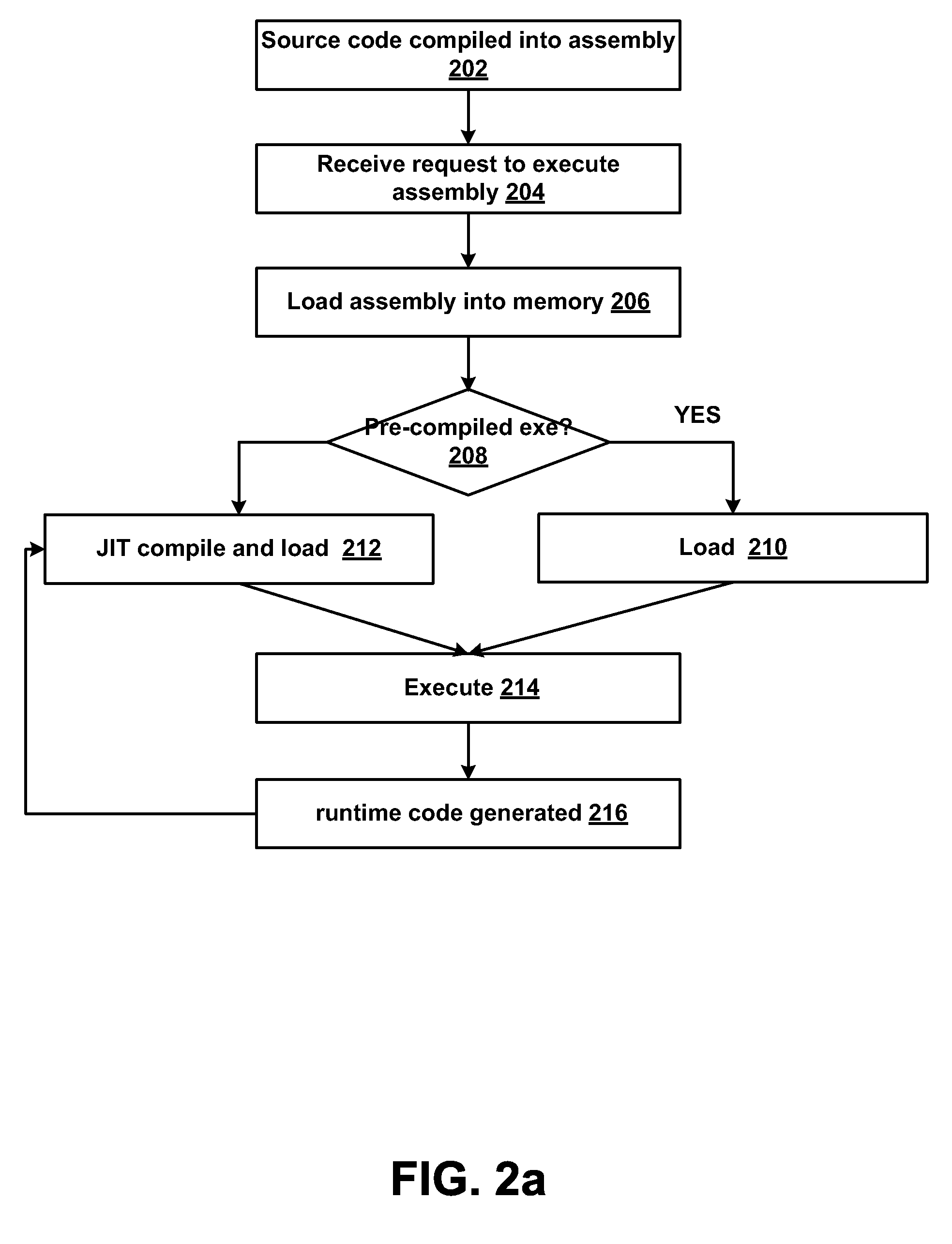Caching runtime generated code
a runtime and generated code technology, applied in the field of cache runtime generated code, can solve the problems of not improving performance, most native languages do not keep track of internal structure information,
- Summary
- Abstract
- Description
- Claims
- Application Information
AI Technical Summary
Benefits of technology
Problems solved by technology
Method used
Image
Examples
Embodiment Construction
Overview
[0014]Reflection Emit is a mechanism that enables additional program instructions to be created dynamically at runtime and invoked. That is, the program architecture itself can be decided at runtime based upon the data, services, and specific operations that are applicable at runtime. For example, suppose a particular program performs mathematics operations and a user wants to perform computations based on a matrix of a specific size. One approach is to write a generic function capable of performing computations on a matrix of any size. Such a function is static because the algorithm by which it operates directly solves the desired problem. Such a program is likely to have inefficiencies because of its requirement to operate on any size matrix. Alternatively, a dynamic solution to the problem may involve the generation of a custom algorithm to solve the problem. Such a solution would involve a static function A that given various input arguments would use some of those argum...
PUM
 Login to View More
Login to View More Abstract
Description
Claims
Application Information
 Login to View More
Login to View More - R&D
- Intellectual Property
- Life Sciences
- Materials
- Tech Scout
- Unparalleled Data Quality
- Higher Quality Content
- 60% Fewer Hallucinations
Browse by: Latest US Patents, China's latest patents, Technical Efficacy Thesaurus, Application Domain, Technology Topic, Popular Technical Reports.
© 2025 PatSnap. All rights reserved.Legal|Privacy policy|Modern Slavery Act Transparency Statement|Sitemap|About US| Contact US: help@patsnap.com



